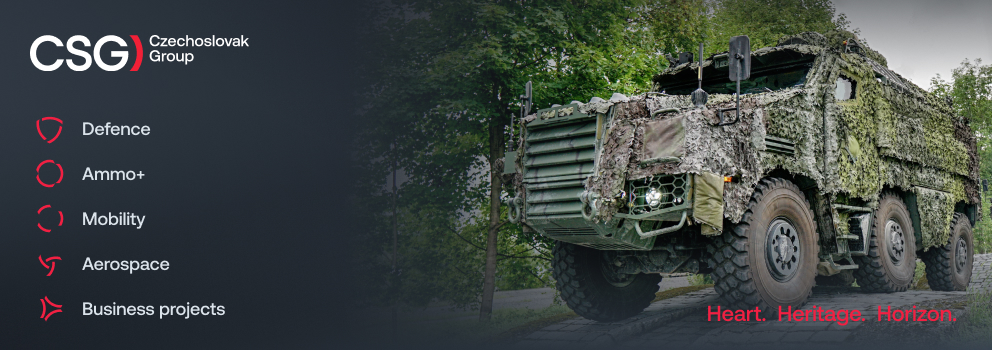The Czech Munitions Initiative for Ukraine is gaining attention. WSJ reports that it has located an additional 700,000 munitions outside the EU
The Czech initiative to deliver hundreds of thousands of artillery shells to Ukraine is gaining momentum. It has already been joined by more than twenty countries, which, outside of the current EU and NATO programmes, are sourcing important military equipment outside the EU countries in their own way. According to The Wall Street Journal (WSJ), Czech negotiators are succeeding even in countries that otherwise maintain friendly relations with Moscow. The American newspaper speaks of up to 800,000 pieces of artillery ammunition that the initiative has managed to secure at the moment, as well as up to 700,000 more pieces that the initiative has located. Foreign Minister Jan Lipavsky has so far confirmed funds for the purchase of 300,000 rounds.

According to experts, the Russians have several times the advantage in Ukraine in terms of the number of usable artillery ammunition, with a ratio of up to 1:5. Mass armaments since the Cold War have provided the Russian aggressor with sufficient supplies for its third year of invasion of neighbouring Ukraine. The difficult negotiations around the still unreleased giant USD 60 billion package for Ukraine in the US, as well as the slow process of approval of further aid by official EU institutions, complicate military support for the invaded country, which is why a number of countries have come up with their own initiatives. One example is the Czech ammunition initiative, which has been running since the very beginning of the war, but only gained more attention this February at the Munich security conference, when Czech President Petr Pavel spoke about the plan to supply Ukraine with up to 800 000 pieces of artillery ammunition.
Since then, other partners have joined in, most recently Lithuania and Poland. The most active members are Germany, the Netherlands and Canada. Logically, Czech officials (and not only) do not want to talk much about the details of the whole process. "Together we are working on ways to stop Russian aggression against Ukraine and the threat to NATO's eastern flank. Poland has openly supported our initiative to supply ammunition to Ukraine, which we very much appreciated," Foreign Minister Jan Lipavsky said after his recent visit to his Polish counterpart Radoslaw Sikorski, adding that some 18 countries have so far joined in, providing the necessary funds for the purchase of the first part of the 300,000 pieces of ammunition so far. "I am proud that it is the Czech Republic and Poland that are at the forefront of support for Ukraine. Moreover, Poland's role will further increase in the context of the Polish Presidency of the EU Council in the first half of next year 2025," Lipavsky added. The first shipment is expected to arrive in Ukraine in June.
Based on its investigative reporting, the US daily The Wall Street Journal claims that the Czech initiative has already managed to secure 800,000 artillery shells, with another 700,000 ready if new money can be found. In total, this is supposed to amount to around 3 billion euros, the authors of the article also pointing out that this is only a small fraction compared to the aid to Ukraine blocked by Congress. According to the WSJ, the ammunition is from the so-called Global South, i.e. developing and less developed countries in Latin America, Africa or Asia.
"We are negotiating and will negotiate with everyone, regardless of their loyalties or political stance. With a few exceptions, such as North Korea," The Wall Street Journal quoted National Security Adviser Tomáš Pojar as saying. According to experts, the countries with which the Czech Republic is negotiating under the munitions initiative are looking at the whole thing through a more neutral lens, even though they are also countries that maintain friendly relations with Russia. In fact, they are more willing to do business with the Czech side, which appears to them to be more diplomatically secure than if, for example, the United States, Germany or Ukraine were to buy equipment from them.
According to some voices, the current situation surrounding the ammunition initiative for Ukraine may also paradoxically lead to a direct weakening of Russian capabilities on the Ukrainian front in the future, if the Russians start to run out of (not only) artillery shells and are thus forced to approach partner states themselves with full stockpiles dating back to the days of Soviet friendship. Recently, the consumption of artillery ammunition on the Russian side has been enormous due to the intensive shelling of Ukrainian army positions and civilian targets in the context of the attrition war. With up to 10,000 artillery shells fired per day, the Russians can afford a more indiscriminate method of attack, while the Ukrainians, with approximately 2,000 artillery shells fired per day, must carefully consider each shell.
"I think many European countries have realised how difficult the situation in Ukraine is. At the same time, many European governments want to send a message to the US that we take our commitments seriously and want the US to continue to contribute to the defence of the free world," an unnamed Czech official told The Guardian, alluding to the US response to other NATO partners regarding its 2% of GDP defence spending, to which more and more alliance nations are committing. Last month, the alliance's outgoing secretary-general, Jens Stoltenberg, announced that he expected 18 countries out of the then 31 members to meet the limit.






















